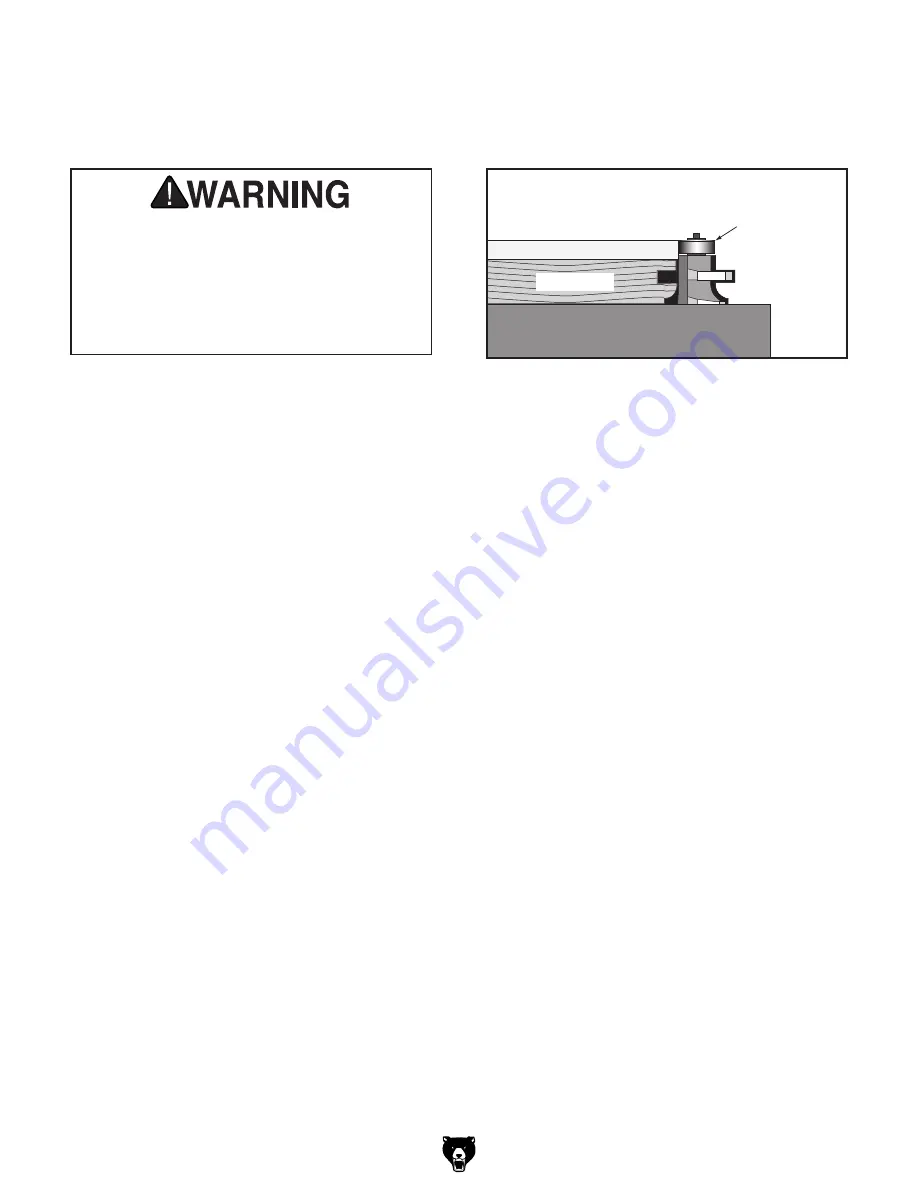
-24-
Model h7507 (Mfg. since 3/05)
To free-hand route:
1. diSConnECt routEr FroM poWEr!
2. Fabricate a jig to use with the workpiece
that will match the finish shape desired, then
attach it to the workpiece (see
figure 36 on
the previous page
for an example).
Note: Make sure any fasteners used will not
make contact with the router bit during the
cutting operation. Glue can be used as an
alternative.
ALWAyS use an auxiliary jig and extreme
care when free-hand routing that requires
removal of the fence. Routing without
the fence and the attached guard greatly
increases the risk of accidental contact
with the spinning cutter, causing serious
personal injury.
3. remove the fence assembly from the table.
4. Fabricate and mount a custom guard over the
bit that safely protects your hands from the
spinning cutter.
5. Clamp a starting block to the table (see
figure 36 on the previous page for an exam-
ple).
IZbeaViZ
GdjiZgIVWaZ
7ZVg^c\
Ldg`e^ZXZ
figure 37. using a template and a bearing for
free-hand routing.
7. Connect the router to power and turn it
ON
.
8. rest the jig with the workpiece attached
against the starting block, then slowly pivot
and feed it into the bit. after the cut is started,
move the jig against the rub collar and away
from the starting block, as illustrated in
figure
35 on the previous page.
6. install a router bit with a bearing as directed
by the router manufacturer's instructions,
then raise it to the desired height (see
figure
37).
if you are unfamiliar with free-hand routing, get
assistance from an experienced woodworker,
read books on routing, and start with a simple
project.






































